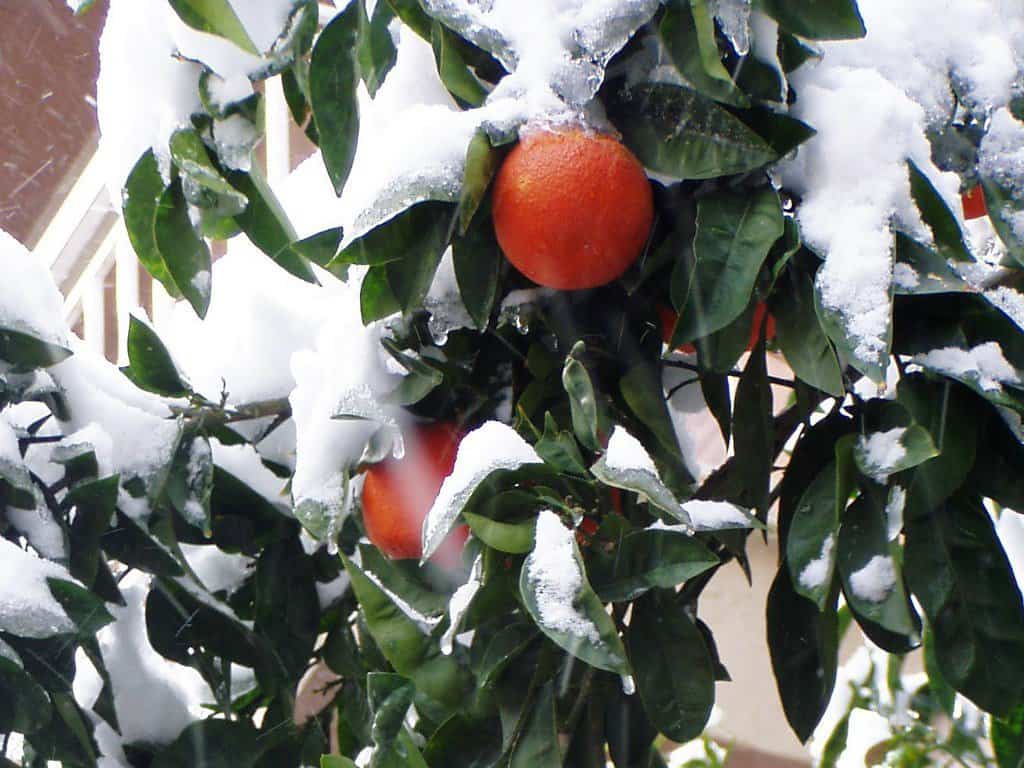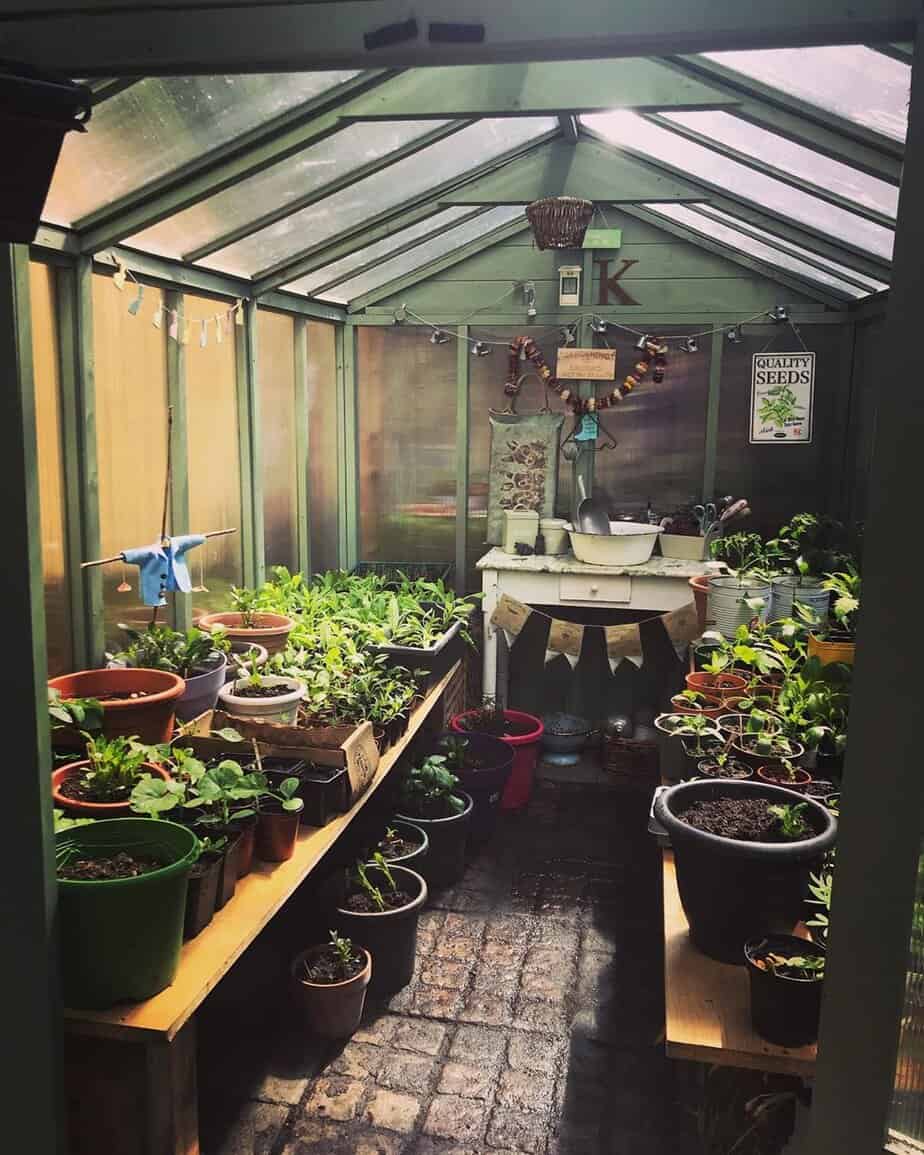Jump to:
Frost, short days, and damp soil can be tough on outdoor greenery. Bringing plants indoors in winter gives them a better chance, but they need the right care to adjust.
This guide helps you care for citrus trees, succulents, and even try new varieties you can grow at home. If that’s what you’re after, read on.
How to Overwinter Citrus Trees Indoors

Got a lemon, lime, or orange tree? Perhaps you’re thinking about bringing a citrus tree home this winter? The first thing you need is light. A sunny, south-facing window is ideal. And where that’s not possible, a grow light will keep the tree from losing leaves and weakening.
Don’t over-water them. The roots don’t like sitting in soggy soil, so let the top few centimetres of soil dry out before you water.
Central heating pulls the moisture out, so give the leaves a bit more humidity. A tray with pebbles and water under the pot works, or you can mist the leaves occasionally.
Keep an eye on the temperature too, ideally around 10 to 15°C – not too warm, not too cold. A cool porch or conservatory is fine, but avoid spots that heat up in the day and drop at night.
Take a look at the pot while you’re at it. If the roots are cramped, move the tree into a bigger pot with fresh soil. Leave the feed until spring, when it starts growing again.
Overwinter Succulents in a Greenhouse or Shed

Succulents don’t do much in winter. They slow down and wait for better conditions. The best thing you can give them is protection from frost. A greenhouse or potting shed is ideal, but indoors can work too.
Succulents won’t grow much in winter, but they still need light. Inside the greenhouse or shed, place them where it’s bright but not in the path of a cold draft. Keep watering to a minimum, at least once every three to four weeks. The soil should be fully dry before you water again.
Aim to keep the temperature above 5°C. That’s enough to stop frost damage and air out the interior on mild days. Handled this way, succulents survive winter and are ready to grow again in the spring.
Overwintering Plants to Grow Indoors
These varieties do fine indoors through winter, as long as you give them the right conditions. Here are some you can count on and how they behave:
- Snake Plant: This is a low-maintenance option if your home doesn’t get much light. Place it in a corner or hallway, and it’ll keep ticking along, even with missed waterings.
- Spider Plant: One of the easiest houseplants to keep! It doesn’t mind indirect light and puts out small “babies” you can re-pot later. A good choice for shelves or hanging baskets indoors.
- Philodendron: A climbing or trailing plant that adapts well to low light. Keep the soil slightly moist, but don’t drench it.
- ZZ Plant: Hard to kill and happy in low-light rooms. It stores water in its thick stems, so you only need to water every couple of weeks.
- Jade Plant: Place it in bright, indirect light and water lightly. It can live for years with steady care.
- Peace Lily: Needs more humidity than most. Put it near other plants or use a pebble tray if the air is dry.
- Aloe Vera: Suits dry air but still needs plenty of light. Let the soil dry fully before watering again.
- Christmas Cactus: Unlike most succulents, it flowers in winter. To trigger blooms, give it cooler nights and less water in the run-up to the season.
- Kalanchoe: Another winter bloomer with colourful flowers. It likes bright light indoors, and a sunny windowsill is the perfect spot for that. Water sparingly to avoid root problems.
- Cyclamen: Produces strong pink, red, or white flowers in cooler rooms. Don’t overwater; keep the soil damp.
- Bromeliads: They can adapt to low light and don’t need large pots. Water into the centre “cup” of the plant rather than the soil.
Repotting and Refreshing Soil for Winter Plants
Before moving a plant into fresh soil, knock away the old mix and cut off any roots that look weak or rotten. Top up with new compost, firm it in with your hands, and add a splash of water. Leave fertiliser until spring, as plants won’t use it much in winter.
If the roots still have room to spread and the plant looks fine, there’s no need to change pots. Most prefer to be left alone while they rest through the colder months. Examples are jade plants, aloe vera, peace lilies, and Christmas cacti.
Overwintering Plants Pest Prevention
Spider mites, aphids, and scale don’t take the winter off. Have a look over your leaves once a week and check underneath as well, since that’s where they tend to hide.
If you do see them, wipe down the leaves with a damp cloth first to remove as much as possible. Spray with neem oil or insecticidal soap, especially if the problem persists.
Keep any new plants separate for a week or so before placing them with the rest. That way, if pests are hiding, they won’t get the chance to spread to other plants.
Plants Indoors in Winter: Round-up
Some plants slow right down, some keep ticking, and a few even flower when it’s cold outside. Bring them in, give them the right spot, and check on them from time to time. You’ll find most of them ride out the season fine. Even better, you’ll have a healthier collection ready to grow when the days get longer!
Get more tips here: Winter Gardening: Keep Your Greenhouse Warm with These Simple Tips





